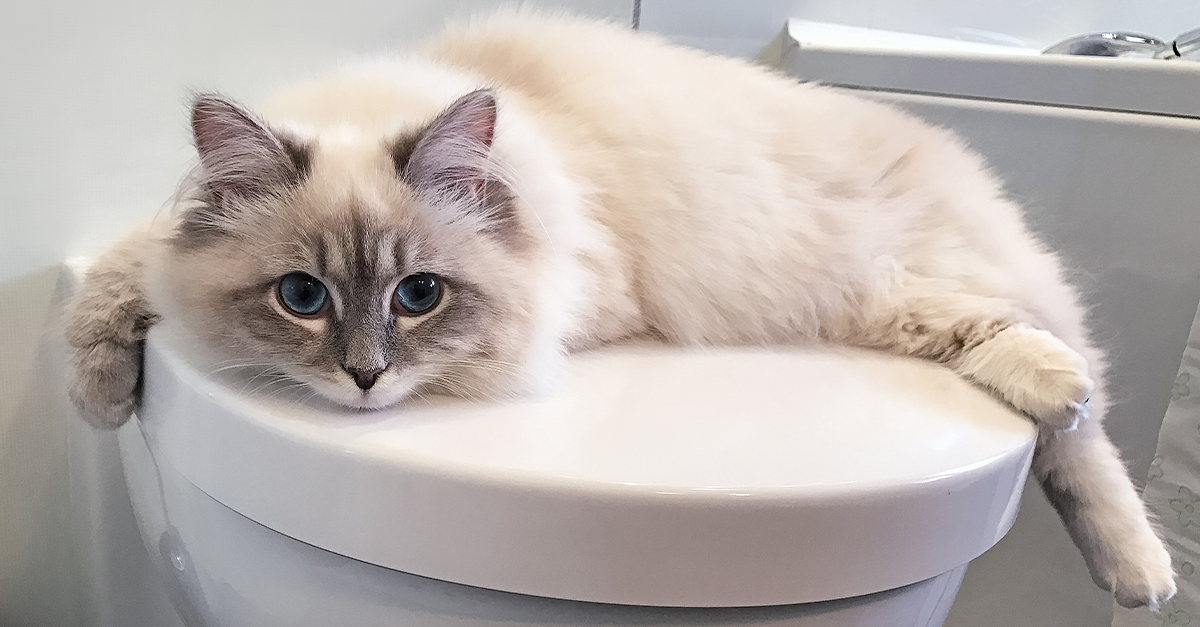Avoid Plumbing Problems: Don't Flush Cat Poop Down Your Toilet - Expert Advice
Avoid Plumbing Problems: Don't Flush Cat Poop Down Your Toilet - Expert Advice
Blog Article
We've stumbled upon this great article involving How to Dispose of Cat Poop and Litter Without Plastic Bags directly below on the web and figured it made sense to relate it with you here.

Introduction
As feline proprietors, it's essential to bear in mind just how we take care of our feline buddies' waste. While it may appear hassle-free to flush cat poop down the bathroom, this technique can have detrimental consequences for both the atmosphere and human wellness.
Alternatives to Flushing
Fortunately, there are much safer and a lot more liable means to dispose of feline poop. Think about the complying with options:
1. Scoop and Dispose in Trash
One of the most usual approach of taking care of pet cat poop is to scoop it right into a biodegradable bag and toss it in the garbage. Make certain to make use of a committed clutter inside story and take care of the waste immediately.
2. Use Biodegradable Litter
Choose naturally degradable cat litter made from materials such as corn or wheat. These trashes are eco-friendly and can be safely gotten rid of in the garbage.
3. Hide in the Yard
If you have a lawn, think about burying cat waste in a designated location away from veggie yards and water resources. Make certain to dig deep sufficient to avoid contamination of groundwater.
4. Set Up a Pet Waste Disposal System
Buy a family pet waste disposal system specifically designed for pet cat waste. These systems make use of enzymes to break down the waste, minimizing odor and environmental influence.
Wellness Risks
In addition to environmental problems, purging feline waste can also posture wellness dangers to humans. Pet cat feces might contain Toxoplasma gondii, a bloodsucker that can trigger toxoplasmosis-- a possibly serious disease, particularly for expecting ladies and individuals with weakened body immune systems.
Ecological Impact
Purging pet cat poop presents dangerous pathogens and bloodsuckers right into the water supply, posturing a considerable risk to marine environments. These contaminants can adversely impact marine life and compromise water high quality.
Verdict
Accountable pet dog possession prolongs beyond giving food and sanctuary-- it also includes correct waste administration. By avoiding flushing pet cat poop down the toilet and going with alternative disposal techniques, we can minimize our environmental impact and shield human health and wellness.
Why Can’t I Flush Cat Poop?
It Spreads a Parasite
Cats are frequently infected with a parasite called toxoplasma gondii. The parasite causes an infection called toxoplasmosis. It is usually harmless to cats. The parasite only uses cat poop as a host for its eggs. Otherwise, the cat’s immune system usually keeps the infection at low enough levels to maintain its own health. But it does not stop the develop of eggs. These eggs are tiny and surprisingly tough. They may survive for a year before they begin to grow. But that’s the problem.
Our wastewater system is not designed to deal with toxoplasmosis eggs. Instead, most eggs will flush from your toilet into sewers and wastewater management plants. After the sewage is treated for many other harmful things in it, it is typically released into local rivers, lakes, or oceans. Here, the toxoplasmosis eggs can find new hosts, including starfish, crabs, otters, and many other wildlife. For many, this is a significant risk to their health. Toxoplasmosis can also end up infecting water sources that are important for agriculture, which means our deer, pigs, and sheep can get infected too.
Is There Risk to Humans?
There can be a risk to human life from flushing cat poop down the toilet. If you do so, the parasites from your cat’s poop can end up in shellfish, game animals, or livestock. If this meat is then served raw or undercooked, the people who eat it can get sick.
In fact, according to the CDC, 40 million people in the United States are infected with toxoplasma gondii. They get it from exposure to infected seafood, or from some kind of cat poop contamination, like drinking from a stream that is contaminated or touching anything that has come into contact with cat poop. That includes just cleaning a cat litter box.
Most people who get infected with these parasites will not develop any symptoms. However, for pregnant women or for those with compromised immune systems, the parasite can cause severe health problems.
How to Handle Cat Poop
The best way to handle cat poop is actually to clean the box more often. The eggs that the parasite sheds will not become active until one to five days after the cat poops. That means that if you clean daily, you’re much less likely to come into direct contact with infectious eggs.
That said, always dispose of cat poop in the garbage and not down the toilet. Wash your hands before and after you clean the litter box, and bring the bag of poop right outside to your garbage bins.
https://trenchlesssolutionsusa.com/why-cant-i-flush-cat-poop/

Do you like reading up on How to Dispose of Cat Poop and Litter Without Plastic Bags? Give feedback down the page. We'd be glad to listen to your thoughts about this blog entry. We hope that you come back again in the future. Loved our write up? Please share it. Help another person check it out. Thanks so much for going through it.
Schedule An Appointment Report this page